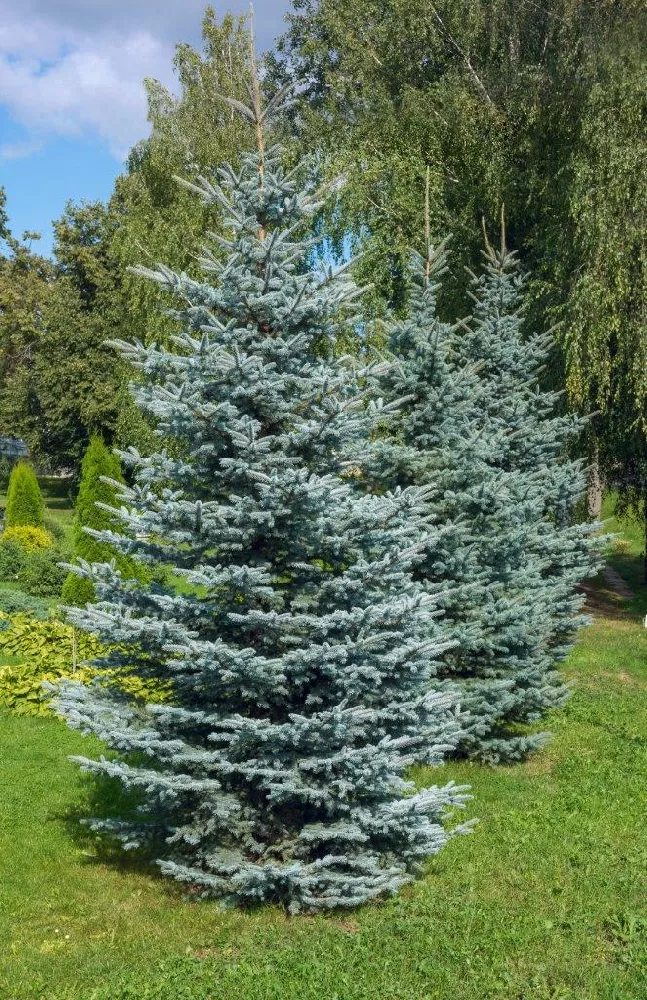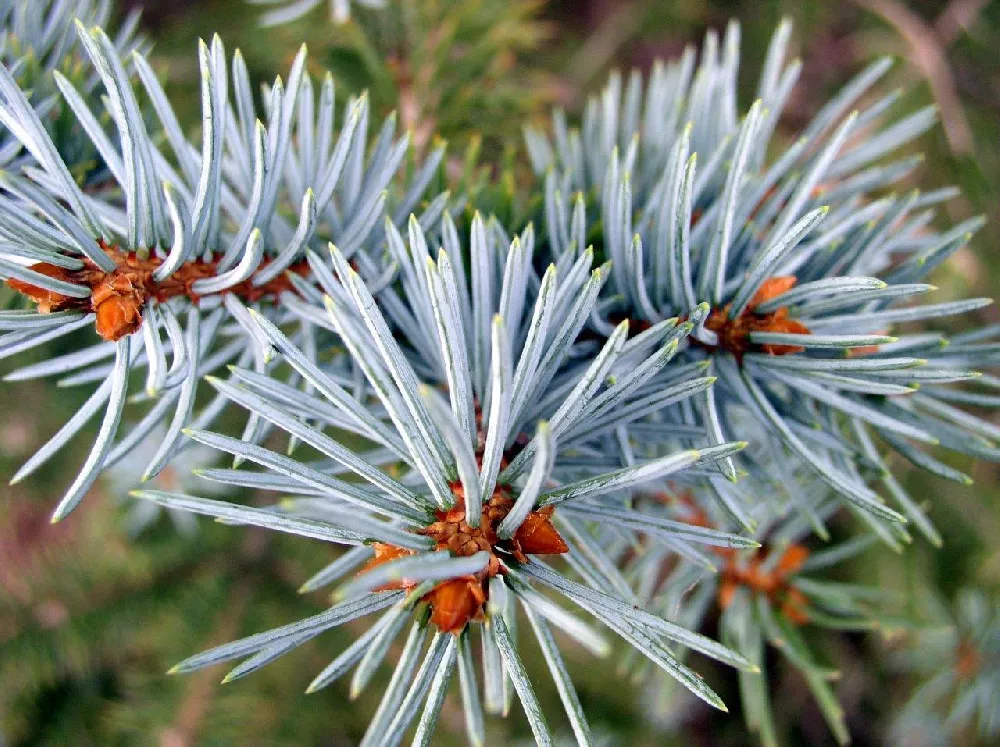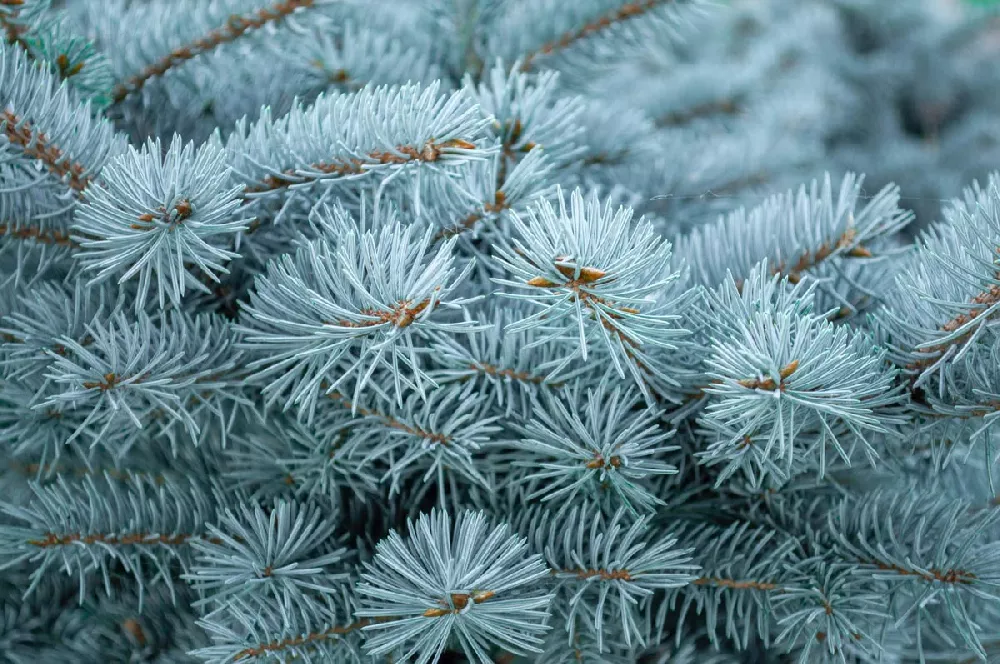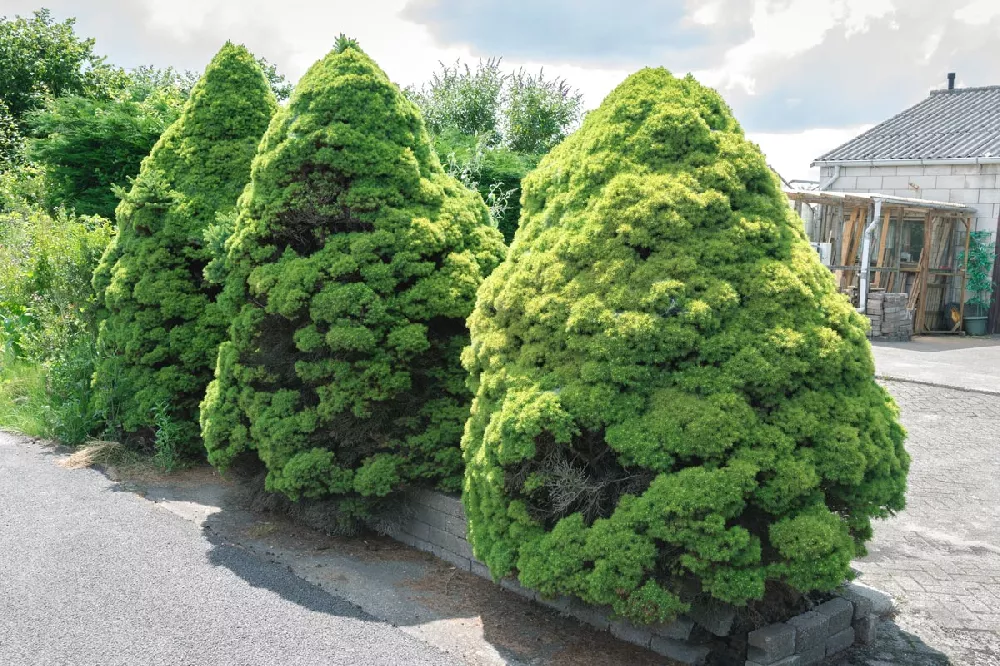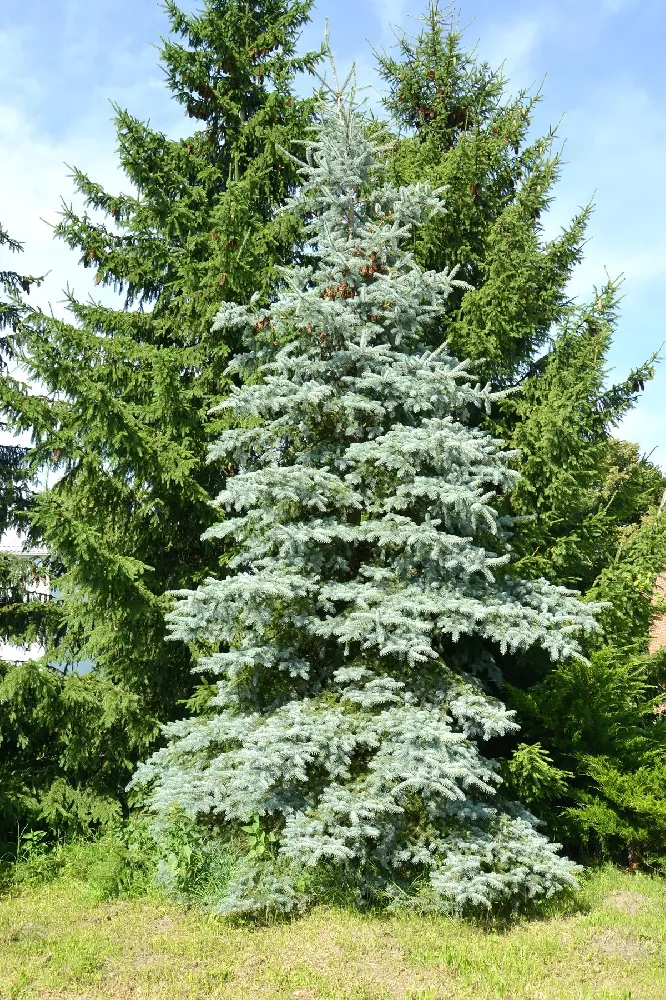- Home >
- Spruce Trees >
- Colorado Blue Spruce Trees
Colorado Blue Spruce Trees for Sale - Buying & Growing Guide
- Ships in 1-2 days
- 1-Year Warranty Eligible
- Pots or accessories are not included unless specified in the product options.
Shipping Details:
Once your order is shipped, you’ll receive an email with a tracking number and estimated delivery date. Most orders ship immediately, but some items are seasonal and may only ship in spring or fall. These products are noted on the website.
Whether planted singly or in a group, Colorado blue spruce trees (latin name: Picea pungens, family: Pinaceae) will be the center of attention in your landscape. The spotlight shines on their unique silvery, blue-green needles and commanding pyramid shape. This Rocky Mountain native thrives in USDA hardiness zones 2 through 8 in various soils and locations. Here are a few reasons why it is one of the most popular choices available:
- The Colorado blue spruce is an evergreen and keeps its silver-blue needles all year.
- It provides a welcome source of food and shelter for many songbird varieties.
- Its main uses are ornamental specimens, windbreaks, and Christmas trees.
Plant Care
Sunlight

Requires at least six hours of direct sunlight per day.
Watering
Survives well with minimal water once established. Water once per week in the absence of rainfall.
Fertilizing

Fertilize in spring with a slow-release fertilizer that has equal amounts of the three main micronutrients.
Planting and Care
Planting instructions
Choose a sunny location with at least seven hours of direct sun daily. Colorado blue spruce trees do not like soggy roots, so be sure the soil is well-draining. The trees are not picky about soil fertility and will do well in poor soils with pH levels from 6.0-7.5. It is helpful to start young trees in moist soil full of organic materials and nutrients.
Dig a hole two to three times larger in diameter and a bit deeper than your tree’s root ball. Amend the soil when needed. Place the tree into the hole, being careful with the roots. Add the mixed soil and tamp it down gently to remove air pockets. Don’t make the soil overly compact as this will cause the tree to fail. Water deeply once you have it filled halfway. Continue to fill with soil until the dirt is level with the top of the root ball but not covering it. Create a trough with a berm surrounding the trunk to help retain moisture when the tree is far from a water source. The addition of mulch in a two inch thick layer around the berm improves the water retention.
Watering and nutrients
Water regularly until the young tree is established. Follow this timeline for newly planted trees:
- First 1-2 weeks: Water daily.
- Weeks 3-12: Water every other day.
- After 12 weeks: Water once a week.
Once mature, water weekly during the summer months over the next three years. Be careful not to overwater your Colorado blue spruce trees. As with most of its drought tolerant relatives, it will not tolerate wet roots.
A conifer fertilizer will go a long way in keeping your Colorado blue spruce healthy and happy. Use a 30-15-15 fertilizer sparingly during the first two to three years to aid in vigorous growth, then switch to a lower NPK of 11-7-7.
Pruning
Pruning is not usually recommended for blue spruce trees. Allow the tree’s branches to droop towards the ground adding to their overall pyramid shape. It also increases their ice and snow load resistance. Light pruning to remove dead or diseased branches, or to maintain the tree’s shape, is advisable. The dense, spiky foliage of the tree makes it an excellent choice for privacy needs.
Pests, diseases, and animals
Poor air or bad soil negatively impacts the Colorado blue spruce tree’s color and general health. Canker and needle cast can affect your spruce tree when dealing with too much water and humidity. Insufficient sunlight and heavy winds add to the problem.
A common pest to most spruce trees is the budworm larvae, which feed on old needles in mid-spring. It moves on to destroy developing buds and new tree foliage. Without management, they eventually kill the tree. Pine weevils can also be a nuisance that feed on all parts of the tree. If pests become a problem, contact a professional arborist or tree service company to treat diseases and infestations.
Deer are not particularly fond of the Colorado blue spruce tree’s sharp, one inch needles, but they will eat them under extreme conditions.
FAQs
Can Colorado blue spruce trees be grown in a container?
Does the Colorado blue spruce go by other names?
Picea pungens is the Latin name of this evergreen beauty. It is Colorado’s state tree but also answers to simply “blue spruce.”
How big will my Colorado blue spruce tree get?
Colorado blue spruce trees are slow growing. Adding an extra six to 24 inches of growth per year is typical. The blue spruce tree can reach up to 130 feet with a canopy of about 35 feet in diameter. It is a bit smaller in the domestic environment but still impressive. Heights of about 70 feet and tops of 10 to 20 feet around are average. It is not unusual for a Colorado blue spruce to take 30 to 50 years to reach full maturity.
How do I plant my Colorado blue spruce trees to use as a windbreak?
These trees are quite effective at blocking and diverting the wind when their needs are met. Well-drained, sunny locations with adequate water are all it takes. Their deep root systems that spread laterally help the trees hold their ground. Plant the trees as instructed above and use the 20 foot spacing guide for both your rows and columns. It is helpful to stake (tie string to three sides of the tree and tie down) young trees that are not yet used to windy conditions.
Compare Similar Products
Customer Reviews
 Seems fine so far
Seems fine so farTrees look healthy. Only about 8 inches tall so it will be a while before I can really judge.
